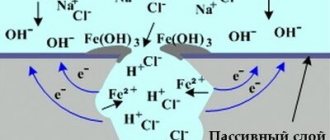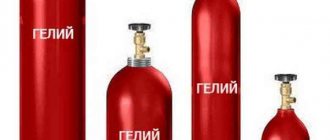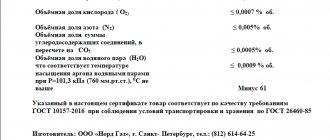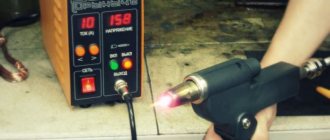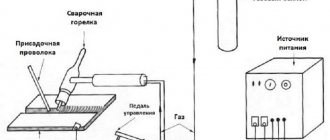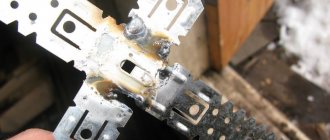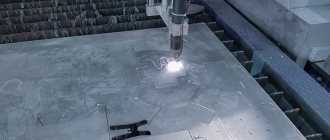Home / Food additives (E) / Antiflaming agents (defoamers, E-900-E-999) and other substances
Back
Published: 07/14/2017
Reading time: 6 min
0
1328
The atmosphere of our planet is an inexhaustible source of a unique gas. The honor of its discovery belongs to the English chemist Lord Rayleigh and his colleague from Scotland Sir William Ramsay. They gave the new substance the name argon (from the Greek “lazy”). This happened in 1894, but only 25 years later gas received official recognition.
Since then, the product has rapidly gained popularity in various industries, including the food industry.
- The product's name
- Type of substance
- Properties
- Package
- Application
- Benefits and harms
- Main manufacturers
Type of substance
Additive E 938, due to its main technological role in food production, is classified as a propellant. Can be used as a shielding gas.
Physico-chemical indicators, conditions of use and transportation of the product are regulated by GOST 10157-79.
Argon is a monatomic noble gas.
The substance is obtained as a by-product when air is separated into nitrogen and oxygen in special double rectification apparatus. Argon is purified from nitrogen by deep cooling, and from oxygen by hydrogenation using platinum as a catalyst or by adsorption.
Argon can be recovered from ammonia production waste. The raw material is hydrogen-bound nitrogen. Gas obtained by this method has a lower cost.
Features of therapeutic therapy
A light or moderate welding burn can be eliminated independently; treatment at home can be carried out using simple and inexpensive medications. But first you need to consult a doctor, he will conduct an examination and prescribe suitable medications. But severe injuries require long-term professional treatment under the supervision of specialists.
So how to treat a welding burn? To alleviate the condition and speed up recovery, the following measures are taken:
- for deep and extensive injuries, bed rest should be observed. Be sure to arrive in a dark room to avoid strain on your eyes;
- It’s worth deciding what to use to treat a welding burn. Doctors advise applying Bepanten, Panthenol, Eplan to the damaged area for some time. They will speed up the healing of damaged skin;
- Be sure to use local skin products with antibacterial properties; Erythromycin ointment helps. Tsiprolet and Tobrex drops are suitable for the eyes. It is recommended to use from 7 to 10 days;
- If there is severe swelling of the eyes and increased tearing, then it is necessary to instill non-steroidal drugs into them. In this case, Indocollir drops will help;
- Additionally, the therapy includes drops with a vasoconstrictor effect - Visin, Octilia, Visomitin. Application should be within 7-10 days;
- What to apply to a welding burn so that damaged skin can quickly recover? Solcoseryl ointment and Syntomycin ointment help well, and Actovegin is suitable for improving blood supply;
- Welding burns to the hands are accompanied by bubbles of interstitial fluid. They can become inflamed, red, resulting in severe itching, irritation and other unpleasant symptoms. For this reason, you can additionally use antihistamines - Suprastin, Zodak.
Properties
| Index | Standard values |
| Color | colorless |
| Compound | argon, impurities: nitrogen (no more than 0.005%), oxygen (no more than 0.0007%). Formula Ar |
| Appearance | gas, may be in a liquefied state |
| Smell | without smell |
| Taste | no taste |
| Main substance content | 99, 993% |
| Solubility | good in water and organic liquids, insoluble in metals |
| Density of matter | 1.784 kg/m3 (at normal pressure) |
| Other | chemically inert; adsorbs on hard surfaces; non-explosive; at t -185.9° C it liquefies; does not penetrate metals; under the influence of electric current forms a bright glow |
Analysis of harmful and dangerous factors when carrying out electric and gas welding work
Due to its distinctive features, the welding process is accompanied by saturated dust emissions, leading to a large dustiness of the production area with toxic fine dust and gas emissions that have a negative effect on the entire body of the worker.
Technical science
Compounds of tungsten, vanadium, zinc, copper, nickel and other elements also adversely affect the worker’s body. When harmful gaseous substances enter a worker’s body through the respiratory tract and digestive tract, they cause damage to the entire body.
07 Oct 2021 lawurist7 395
Share this post
- Related Posts
- Who is considered a Child of Chernobyl
- Payment of Dividends Payment Order Sample 2020
- Expiration of the Property Lease Agreement
- Will the Disability Pension Increase in 2020?
Application
Additive E 938 is approved in Russia, the countries of the European Union and EAEU, the USA, Canada and others.
The share of argon in food production is small and is limited to two auxiliary functions:
- propellant - a substance that helps squeeze products out of a container (for example, whipped cream from a can);
- protective gas when using controlled atmosphere packaging (MAP) food storage technology. Argon protects products from contact with oxygen, preventing oxidation and contamination by anaerobic microflora. Typically used for packaging meat products, poultry, fish, and vegetables.
One of the new promising areas for using argon is medicine.
Inert gas has proven itself best in surgical practice. The substance does not react chemically with biological materials. This property made it possible to use argon for thermal non-contact coagulation of tissues.
The argon plasma coagulation method is used to solve a wide range of problems:
- stopping bleeding of various etiologies, including gunshots;
- removal of tumors;
- restoration of patency of veins and arteries during thrombosis;
- performing a caesarean section
The product accelerates the synthesis of erythropoietin and other biologically active proteins responsible for tissue regeneration. Treating wounds with inert gas allows you to:
- reduce pain;
- reduce the likelihood of complications;
- speed up the resorption of the suture.
Argon serves as the working rod in gas ion lasers. The device is used for surgical operations on the retina. The argon beam easily penetrates the cornea, cuts and immediately seals the vessels. With its help, glaucoma is successfully treated.
The argon laser has been adopted by the beauty industry. In the cosmetics industry, the device is used to remove tattoos and lipomas and combat skin hyperpigmentation.
Other areas of use of the E 938 additive:
- in metallurgy for arc welding of uranium, aluminum, titanium (used as a shielding gas);
- for filling airbags in cars;
- as a heat insulator in the production of cement and glass;
- in incandescent lamps (mixed with nitrogen) to increase the light output of products; in luminescent ones - to accelerate current transmission;
- in the production of double-glazed windows to reduce thermal conductivity and enhance sound insulation;
- in laser shows: figures are drawn in space with a green argon beam.
After use, argon returns to the atmosphere almost unchanged. The cycle of its extraction and use repeats itself.
Possible complications and precautions
Don’t think that mild to moderate burns go away quickly without special treatment. Welding injuries are very serious, and if left untreated, they can have serious health consequences in the future.
Possible complications:
- charring and tissue necrosis requiring transplantation;
- damage to deep layers;
- there may be extensive scarring in the future. If they are on the face, plastic surgery may be required;
- partial loss of sensitivity of muscle tissue if nerve endings were affected;
- decreased visual acuity;
- the appearance of a cataract on the surface of the cornea;
- scars and ulcers on the eyes;
- periodic exacerbation of conjunctivitis, inflammation.
To avoid injury during welding, you should use personal protective equipment - a uniform made of thick fabric, a mask, goggles, gloves. Welding equipment must be in good condition, and the ventilation system must be turned on. And it is important to follow all safety rules when welding; everything must be done correctly, in accordance with the standards and requirements.
Extremities always suffer greatly from burns; during work, an arm or leg can be damaged; welding can also damage the organs of vision. For this reason, you should not neglect safety, otherwise you may face unpleasant consequences in the future. With mild and moderate forms, you can quickly prevent all symptoms and problems, but with a severe burn, you will definitely need the help of a doctor, and often such injuries end in disaster for the person.
Benefits and harms
Additive E 938 does not have significant biological value. It is considered completely safe as a packaging gas.
Caution should be exercised in direct contact with the substance.
When inhaled, argon has serious physiological effects similar to narcotic effects. It is no coincidence that the World Doping Agency included it in the list of prohibited substances in 2014.
Argon is heavier than air. Accumulating in poorly ventilated areas near the floor, it begins to displace oxygen. A high concentration of inert gas can cause oxygen starvation, provoke vomiting, and loss of consciousness. In severe cases, death from asphyxia.
Liquid argon is dangerous. The low-boiling liquid causes severe frostbite to the skin.
The food additive E473 is used in the food industry to improve the taste of the product and its appearance.
What is nitric oxide supplement and where is it used? Find out about this by reading our article.
Chlorine is most often used to disinfect water. You can find out where else it is used here.
Who is an argon welder and what does he do?
In order to become a highly qualified specialist, you need to study and then systematically improve your skills and craftsmanship . In the profession of an argon welder, there is a division into several categories. Accordingly, the higher the rank, the higher the specialist’s salary. The division into categories is as follows.
Responsibilities
Of course, the profession of argon welder is more suitable for men . Young people can receive appropriate education at vocational schools, colleges and technical schools. If it is not possible to enter such educational institutions, for example, due to age, then you can complete professional courses.
This is interesting: MGP Benefits for Young Families
Temporary workers are paid for the time worked; with the introduction of a time-based bonus system, a bonus of up to 30% is awarded for high-quality work, and when a standardized task is issued - up to 40% of the amount of wages at tariff rates.
When carrying out welding work, a person is exposed to ultraviolet radiation, high temperatures and harmful gases. Many years of work in harmful conditions leads to the development of occupational diseases. Therefore, people engaged in this type of activity have the right to claim certain types of compensation. This material describes what benefits are provided welder in 2020
What benefits are available to a welder in 2021: types of state assistance and documents for registration
Proper organization of the lunch break is of great importance to reduce the level of fatigue. The lunch break must be at least one hour long. The lunch break time should be calculated in such a way that the second half of the day, when performance is reduced more significantly than in the first, is shorter by 0.5-1 hour.
Working with a welding machine is considered hazardous, so workers are entitled to benefits and privileges. Most often, welders suffer from vision and respiratory system problems. Eye problems occur due to excessive brightness of the electric arc or gas, and fine dust gets into the lungs
.
- manual welding of parts of varying complexity from metals (steel, cast iron, non-ferrous metals, alloys);
- gas cutting of parts and scrap metals;
- control of welding machines for various purposes;
- production of spatial structures using welding.
Discharges of electric and gas welders according to ETKS
An electric gas welder is someone who connects large parts, assemblies and spare parts using manual electric and gas welding. This type of activity is considered the most difficult, but it allows you to perform a wide range of work.
The increased temperature of the welding arc promotes intense oxidation and evaporation of metal, flux, shielding gas, and alloying parts. Oxidized by air oxygen, these vapors form fine dust, and convective currents formed during welding and thermal cutting carry gases and dust into the upper layers of the room, leading to a large dustiness and gas contamination in the electric gas welder’s workplace.
Main manufacturers
In Russia, about 30 companies produce argon. The largest of them:
- Argon LLC (Krasnodar city);
- Chemical plant (Krasnoyarsk region);
- CJSC Lentekhgaz (St. Petersburg).
Praxair Inc. (USA) is one of the world leaders in argon production.
The very first air separation plant was opened in 1902 by The Linde Group (Germany). Now the holding includes 2,800 plants producing noble gases in 80 countries.
Interesting fact! Biologists have experimentally proven that argon has a beneficial effect on plant growth. In an atmosphere consisting of only 2% oxygen and 98% argon, scientists successfully grew onions and carrots. Cucumbers, rye, and corn were germinated in a completely argon environment.
First aid
If workers exhibit symptoms of prolonged exposure to small concentrations of nitrogen, it is necessary to take the victim out into the open air, provide rest and plenty of warm, sweet drinks. If there are signs of exposure to argon in high concentrations (loss of consciousness, wheezing), perform the following actions:
- The victim is taken out into the fresh air.
- Take off tight clothes, unfasten the collar and trouser belt.
- Perform artificial respiration.
- They call an ambulance.
If it is impossible to quickly remove a person poisoned by argon into the air, you should ventilate the room as much as possible - open and secure all windows and entrances. It is important to prevent further filling of the room with argon - tighten the taps on the cylinders and call the gas service.
When performing artificial respiration, it is desirable to provide additional access of oxygen to the victim’s respiratory system, for which medical oxygen pillows are used, and in their absence, oxygen can be pumped through a gas outlet hose from industrial cylinders for welding. It should be remembered that before pumping oxygen from a cylinder, you need to make sure that there are no oily rags or flammable substances within a radius of 15 meters from the victim.
If a person has been exposed to welding argon for more than 2 hours, he needs to receive artificial ventilation in the hospital to prevent complications. The person providing assistance must record the start time of first aid and inform it to the emergency doctors.
It is important to note that when evacuating victims from a closed room filled with argon, rescuers need to use hose gas masks or an isolated oxygen supply system.
Preventing the effects of argon
The harmful effects of argon during welding can be prevented by using the following measures:
- ensuring active ventilation of rooms for welding work;
- use of oxygen level monitoring devices;
- regular checking and maintenance of argon cylinders;
- regular sampling and analysis of air samples when working in mines and basements;
- use of oxygen-isolating breathing masks;
- compliance with the work and rest regime.
For active ventilation of workshops, you can use fans and industrial air conditioners; when planning their location, it is important to determine in advance possible places where argon will accumulate if it leaks. Oxygen level monitoring devices with sound and radio alarms should be installed no higher than 0.5 m from the floor level near each point where welding work is carried out with a separate argon cylinder.
If welding work is carried out in hard-to-reach underground rooms, then air samples must be sent for analysis at least 3 times per work shift (12 hours) and if an increased concentration of argon is detected, personnel must be evacuated immediately.
Individual breathing systems that isolate the worker from the external atmosphere should be used when welding alone in hard-to-reach places where it is impossible to provide first aid to the victim or assess the degree of suffocating effects of argon (for example, when repairing ventilation shafts).
Maintaining a rest regime and going to the first aid station at the first signs of dizziness and lack of oxygen will help avoid loss of consciousness and suffocation.
Symptoms and signs
First of all, aluminum is very harmful to the central nervous system, and the symptoms of aluminum poisoning are most often manifested by its neurotoxic effects.
With prolonged exposure to these salts, the following symptoms appear:
- convulsions occur;
- decreased memory and concentration;
- a depressive state occurs;
- Loss of motor coordination develops.
and this condition is called toxic encephalopathy. The role of aluminum intoxication in the occurrence of a serious personality-destroying disease—Alzheimer’s disease—is still being debated.
Chronic aluminum intoxication causes disruption of the extrapyramidal nervous system, which controls unconscious motor activity and muscle tone. Long-term exposure of nervous tissue to aluminum impairs its trophism and leads to the development of neurodegenerative changes.
In case of acute poisoning with aluminum and its compounds, the patient develops symptoms:
- lethargy;
- possible loss of consciousness;
- development of a coma.
In case of chronic intoxication with this metal in a patient:
- speech disorders occur in the form of stuttering;
- impairment of voluntary motor skills.
These signs appear quite early. Late symptoms of aluminum intoxication will include the presence of signs:
- chronic speech disorder;
- convulsive syndrome;
- personality changes with the development of dementia and memory loss;
- complete breakdown of motor skills.
In childhood, excess aluminum, which most often occurs with frequent consumption of juice bags, contributes to the development of increased motor activity, excitability, and headaches. In schoolchildren, excess aluminum leads to aggressiveness, memory disorders and learning difficulties.
In addition to the central nervous system, aluminum also affects the human skeleton. The harm of aluminum to bones is that it competes with calcium and displaces it from normal bone tissue into the blood. As a result, a person’s number of active cells – osteoblasts, which synthesize and renew bone tissue – decreases. With prolonged exposure to aluminum, bones soften, which leads to pathological fractures and dental problems - fluorosis.
Dental fluorosis is also a consequence of long-term aluminum intoxication
In the clinic, this is manifested by bone pain and muscle weakness in the legs, and fractures appear in the later stages. When taking tests, an increase in calcium in the blood serum becomes noticeable, since aluminum simply “drives” it out of the bones, as well as an increase in aluminum itself. Bone mineralization decreases, this is clearly visible when conducting a study such as densitometry.
The photo shows the results of a blood test, which shows that the calcium level in the blood is increased
Doctors especially note the harm of aluminum to the health of pregnant women. Nursing mothers who worked in aluminum production and suffered from chronic occupational intoxication passed this metal to their children through breast milk. According to research results, they were lagged behind in growth and development, their nervous system was less developed than their peers. Therefore, modern European recommendations advise limiting or eliminating medications for heartburn and peptic ulcers that contain compounds of this metal, and not using them in pregnant and nursing mothers.
The harm of aluminum to the human body is that it suppresses the immune system. Under its influence, lymphocytes reduce activity and begin to multiply poorly. Due to suppressed immunity, an allergy to aluminum occurs, and not only to it. This metal causes suppression of the immune response and contributes to the activation of various autoimmune diseases in the elderly. These include pathologies such as rheumatoid arthritis, severe psoriasis and systemic scleroderma.
Signs of aluminum phosphide poisoning include the toxic effect of phosphine. This is a very poisonous gas, its smell of rotten fish is felt at a concentration of 2 mg per cubic meter, and if phosphine is inhaled for a long time at a concentration of 10 mg per cubic meter, it can be fatal. In acute phosphine poisoning, there are no specific symptoms; they can even be confused with the flu and food poisoning.
Aluminum phosphide tablets
Typically, breathing becomes difficult, dizziness, nausea and vomiting occur, headaches and convulsions occur. Abdominal pain occurs and a cough appears. In case of serious phosphine poisoning, the condition can be so severe that the person loses consciousness and death occurs from respiratory and cardiac arrest. It is very important to remember that symptoms of phosphine poisoning can occur up to two days after you stop using it as a pesticide or grain dressing.
Rules for working with electric welding
The welding process is the most powerful in producing infrared radiation. You don’t even have to go to the solarium, just put the mask and overalls aside and cook without them. Moreover, novice welders pay little attention to this, and think that if they have protected their eyes, then they don’t even need to cover the rest, open parts of the body.
Therefore, the first and main rule when working with electric welding is to reliably protect the eyes and open parts of the body from the harmful effects of ultraviolet radiation. Fortunately, today you can buy very high-quality workwear and automatic masks for welding, which will help protect your eyes from electroophthalmia and visual impairment from welding.
The chemical factor, which was already mentioned above in this article on the site about manual arc welding mmasvarka.ru, also causes no less harm to the welder. Welding in a closed room, and even without good ventilation, can lead to poisoning by combustion products of metals and electrode coating.
That is why welding work should be carried out outdoors or in rooms with good ventilation. At the same time, it is important not to forget about fire safety rules when welding, which in no case should be neglected.
Poisoning by aluminum and its compounds
It is difficult to find a metal that is as widespread in nature as aluminum. True, it was obtained in its pure form quite late, since it is found in a dispersed form in the earth’s crust. But in terms of its presence in nature, it occupies a solid third place after oxygen and silicon. The Clarke of this substance (or the content of the element in the earth's crust) reaches 8.8%. Even ordinary clay contains a fair amount of aluminum in the form of aluminosilicates. And the red type of clay - bauxite - is an industrial raw material.
If it is so widespread, is aluminum likely to be harmful to humans? Many generations have been using aluminum cookware, what harm can it do? Old spoons that have lasted for several decades are simply thrown away, and no one has yet gone to the hospital after using them. How harmful can an aluminum pan be, and under what conditions can this harmful effect occur?
Old aluminum dishes
It is known that aluminum salts are widely used in various areas of the national economy, for example, in household chemicals and cosmetics. Does aluminum cause harm or benefit when found in roll-on deodorants in almost every home? How do acute poisonings with this metal manifest themselves, and how to treat them? We answer these and many other questions in this article.
But before we talk about the dangers of aluminum for the body, we need to pay a little attention to its obvious benefits. Why is this element needed? And we will not be talking about the industrial use of this metal at all - it is well known. Airplanes and spoons, car engine cylinder blocks and wires, dishes and cosmetics are just a few examples of the use of this metal. Let us tell you why people need aluminum for health.
See also articles about aluminum: Duralumin alloy and aluminum scrap.
Smoke during welding
Smoke during welding, whether manual arc MMA, TIG, MIG/MAG, or gas, poses a danger to human health. Along with it, various heavy metals and chemical compounds rise, almost a third of the periodic table. Each substance can affect the human body differently. We will talk about the most dangerous ones.
Manganese Mn is used as a metal deoxidizer in metallurgy. Makes metal more liquid and pliable. During a thermal reaction with other metals it rises in the form of small particles. An overdose of 40 mg leads to loss of appetite, drowsiness, memory impairment, and increased fatigue. It is a polytropic poison. Long-term exposure leads to disruption of breathing, the cardiovascular system, the functioning of the brain, and the central nervous system.
Zinc Zn is used as an alloying corrosion-resistant material in brass, the content can be up to 50%. Gives special properties to metal. When burned, white smoke and oxide powder are formed. They cover pipes, sheets and the like. The daily dose should not exceed 11 mg. Overdose leads to deterioration of health. Associated symptoms include: the appearance of a sweet taste in the mouth, nausea, vomiting, severe thirst, chills, increased drowsiness, dry cough, pressing pain in the chest, a sharp increase in body temperature. Long-term exposure leads to oncology of internal organs. Renal failure, impaired circulatory function, heart function, and calf muscle cramps may develop.
Copper Cu metal is used both in pure form and in alloys of bronze, brass, and other metals. It has high thermal conductivity and electrical conductivity. Widely used in industrial sectors and in everyday life. Excess inhalation of copper vapors and particles leads to a functional disorder of the nervous system, copper fever, lacrimation, irritation of the mucous membranes of the respiratory tract, headache, weakness, muscle pain, heavy sweating. Long-term exposure leads to impaired renal function, liver cirrhosis, allergic dermatosis, and anemia. Especially when welding copper and its alloys, such symptoms are observed.
Boron B is used in metallurgy for alloying steels and non-ferrous metals. During the welding process it evaporates, forming various chemical compounds. Signs of poisoning: irritation of the eyes and nasopharynx, convulsions, mental disturbance, double vision, vomiting, nausea.
Nickel NI, when evaporated into the respiratory tract, can reduce lung motility, chronic bronchitis, and lung cancer.
Silicon and Si accumulation in the lungs when inhaling vapors leads to the disease silicosis, associated with difficulty breathing.
Potassium K is used in coating the electrode with silicon. Potassium silicate or liquid glass. If ingested as small particles into the lungs, it can cause serious complications. There is general muscle weakness, more frequent urge to go to the toilet, profuse sweating, and an increased risk of diabetes.
Nitrogen N gas, which is used in welding, when inhaled in its pure form, affects the central nervous system. Side effects of its manifestations such as unreasonable excitement, fear, anxiety, cramps and spasms of the calf muscles, breathing problems, chest pain, tachycardia, hyperthermia, impaired consciousness.
Carbon dioxide CO2 is used as a shielding gas during welding. In a poorly ventilated room, its permissible concentration increases. This affects the human condition. Since it also carries nitrogen along with it. Poisoning manifests itself in the form of impaired coordination of movement, headache, visual irritation to bright light, slow motor skills, and mental fatigue.
Argon gas Ar is used in TIG welding MIG/MAG; it has inert properties and does not interact with metals. Heavier than air. A single inhalation of pure argon causes euphoria. This is accompanied by the displacement of oxygen from the human body and replaces it. With subsequent prolonged exposure, heaviness occurs in the frontal part of the head, a feeling of heat throughout the body, and tingling in the limbs.
Chromium Cr is used in metallurgy for alloying steels of various alloys, electroplating, etc. When ingested in large quantities in the form of particles and chemical compounds, it makes itself felt. Skin rashes, dermatitis, eczema, development of stomach ulcers, bronchial asthma, development of liver kidney disease. Especially when welding stainless, heat-resistant steels.
Iron Fe excess can lead to damage to the brain, kidneys, and liver. Signs of poisoning: yellowish skin tint, heart rhythm disturbances, nausea, loss of appetite, stomach pain.
In addition to gases, all elements interact with each other, enhance the process of absorption into the body, resulting in a critical dose of poisoning. Please use respirators that neutralize impurities in the smoke during welding. Sometimes it does not appear immediately, but only after some time. Let’s say you worked all week and nothing bad happened, but on the weekend at home you already feel tired while resting. At the same time, you do not engage in physical labor. Here is the effect of these elements on the body.
Aluminum and health
This metal is vital. Despite the fact that the body requires very little of it, literally traces - about 40 mg per day, it is part of the biological tissues of not only humans and warm-blooded animals, but also plants. Recently, the intake of this metal into the human body has increased significantly due to its greater use in the food industry. These are dishes and aluminum foil, some food additives.
“Maalox” with aluminum hydroxide
Medicine cannot do without aluminum and its compounds. Many sorbents and preparations for reducing the acidity of gastric juice contain aluminum salts. These are Almagel, Phosphalugel, Maalox and similar products. Compounds of the element are actively used to treat various forms of gastritis, gastric ulcers, and to relieve heartburn. Humans consume significant amounts of this metal with some vegetable crops. So, turnip contains 45 mg of aluminum per kilogram, apple – up to 150 mg. Tea leaves contain a larger amount of this metal, up to 1400 mg, that is, more than a gram per kilogram of mass, and it goes into the drink.
Meat does not contain much aluminum, on average about 10 mg per kilogram. It is known that animal products contain 50 times less of this substance than plant products. In addition to being a naturally occurring metal, the amount of aluminum in foods increases when cooking in aluminum cookware, and this can lead to health problems. Which compounds are the most harmful?
